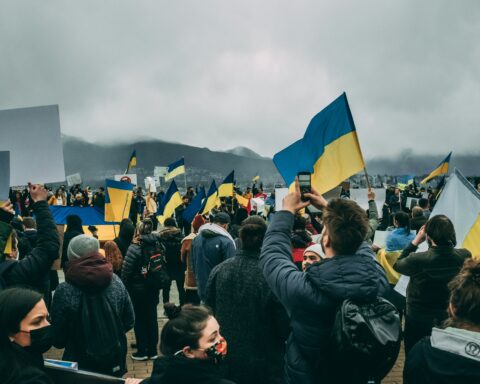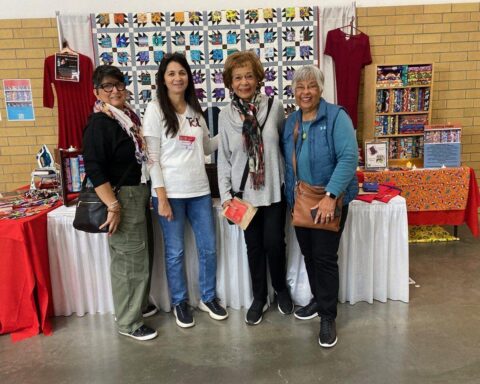Even before its planned opening in 2014, the Canadian Museum for Human Rights in Winnipeg, Manitoba has had its share of critics. They insist that the museum fails to adequately address certain aspects of its avowed aim to educate, promote awareness and increase dialogue about human rights.
One of the issues raised is that the Holocaust is being given undue prominence in deference to the Aspers, a wealthy Jewish family whose late patriarch Israel [Izzy] Asper launched the CMHR in 2003 as a private initiative. In 2008, an act of Parliament made it a national museum. At the centre of this controversy are the “genocide” galleries, which include information on the Holocaust, the Rwandan genocide, the Armenian massacre and the Ukrainian Holodomor famine of 1932-33 during which millions died.
A section of the Ukrainian community has been the most vocal on the issue, garnering major media attention and critical analysis of the museum’s contents. Roman Zakaluzny, chairman of the Ukrainian Canadian Civil Liberties Association (UCCLA), said Canadians will not get to see a fair representation of all such atrocities in the museum despite the fact that their tax dollars are now largely funding the project. [As of December 2011, Global News reported the total budget for the building and its exhibits was $351 million, with approximately $200 million of that coming from taxpayers.]
“This isn’t a private museum. Donations shouldn’t reflect content in a national museum,” said Zakaluzny. “No one community should have pride of place over another. The museum hasn’t provided enough evidence that all genocides will be treated equally. This isn’t just about the Ukrainian community.” To emphasize this, the UCCLA launched a postcard campaign showing people of various ethnic backgrounds fleeing the museum.
‘No hierarchy of genocides’
Angela Cassie, the director of communications and external relations at the CMHR, was quick to shoot down the accusation.
“There is no hierarchy [of genocides] here, and any suggestions of that is a gross misrepresentation of our intentions at the CMHR,” Cassie said. “Those comments divide, when our goal is to bring people together to recognize the humanity in others and take action for human rights.”
Cassie stressed that human rights violations and “reliving the past” were not the focus of the museum, but that the CMHR serves as an educational vehicle to promote understanding of human rights issues and draw lessons. She also said violations are not emphasized, and the museum is not a memorial or institution for comparing genocides.
“Even in our examination of the Holocaust, we’re looking at that broader concept, at all groups who were affected by the Nazi regime,” said Cassie. “We’re looking at what we can learn from these stages of genocide, and there are some very relevant stories for us to learn.”
New Canadian experience
The museum is much more than a display of crimes against humanity, and also contains content examining the experience of New Canadians, contends Cassie. The internment of Canadians during the First World War, including the Italians, Ukrainians, Poles and the Japanese, are some of the galleries the museum is commissioning to show Canadians these black marks in their nation’s history and how far removed they are today from those shameful episodes.
Cassie also noted the museum has worked with the Ukrainian community in bringing special guest lecturers from Ukraine to the museum, resulting in a memorandum of understanding between the CMHR and Ukraine’s National Holodomor Museum in Kiev last July.
“We are moving things forward in a very positive fashion with the Ukrainian community,” she said. “It’s about working in collaboration with these communities to make sure their stories are properly represented, and to make sure they understand exactly what a human rights museum is.”
Cassie highlighted the different ways Ukrainian content was integrated into the museum, including an inaugural feature film on the Holodomor. First World War internment, an interactive study table containing primary-source information on the Holodomor, the struggle by the Ukrainian-Canadian community to gain parliamentary recognition for the mass deaths and an analysis of Stalin’s “techniques of genocide” are among at least seven other exhibits displaying Ukrainian stories.
Not just Ukrainians
The Museum’s PR offensive has borne some fruit. The Ukrainian Canadian Congress (UCC) decided to work with the CMHR after it resolved with the museum apprehensions about how the Holodomor was going to be covered. The UCCLA, however, remains unconvinced.
Other Canadian immigrant groups are also calling for more inclusive action by the CMHR. The CBC reported on March 4 that the Palestinian-Canadian community has become the newest group to take up issue with the museum.
“This proves that it’s not just Ukrainians who are unhappy with the museum’s content and layout, but Canadians across the country,” UCCLA’s Zakaluzny said. He cited a July 2012 Nanos Research poll (paid for by Canadians for Genocide Education and UCCLA) which showed 60 per cent of the approximately 1,200 people polled were in favour of a “one exhibit/all genocides” approach versus a “one gallery highlighting a particular genocide permanently” approach.
The UCCLA, in the meantime, has won another of its battles by securing a deal with the Government of Canada, Parks Canada and the Canadian First World War Internment Recognition fund for a permanent exhibit in the immediate vicinity of an internment camp for Ukrainians in Banff from 1914-1917. This recognition came after around 25 years of lobbying, when Citizenship and Immigration Minister Jason Kenney acknowledged the need for restitution in 2008. – New Canadian Media




